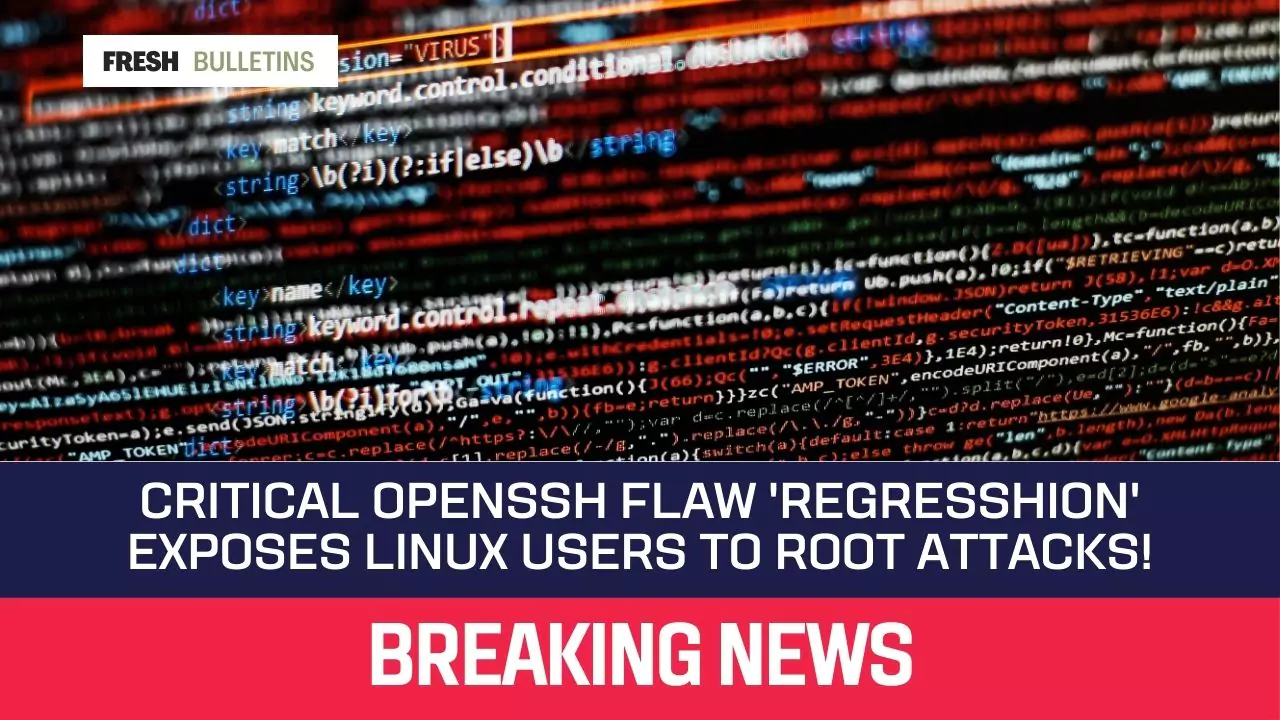Critical OpenSSH Flaw ‘RegreSSHion’ Exposes Linux Users to Root Attacks!
A critical vulnerability in the OpenSSH networking utility, dubbed “regreSSHion” and tracked as CVE-2024-6387, has been discovered, posing a significant threat to Linux and Unix servers. This flaw allows attackers to execute remote code with root system privileges without the need for authentication. Let’s delve into the details of this vulnerability and its potential impact, along with mitigation strategies to safeguard against its exploitation.
The Vulnerability: “regreSSHion” in OpenSSH
The vulnerability, referred to as “regreSSHion” and identified as CVE-2024-6387, centers on a critical flaw in the OpenSSH networking utility. Specifically, it permits unauthenticated remote code execution with root system rights on Linux systems that are based on glibc, the open-source implementation of the C standard library. This vulnerability is attributed to a code regression that reintroduced a previously fixed exploit (CVE-2006-5051) in 2020. The flaw resides in sshd, the main OpenSSH engine.
Potential Impact of regreSSHion
The consequences of the “regreSSHion” vulnerability are significant since it can result in complete system compromise, allowing attackers to execute any code with the utmost privileges. These actions could lead to a total takeover of the system, the installation of malicious software, the modification of data, and the establishment of backdoors for continuous access. The ability to obtain root access on Linux and Unix servers poses a risk of network spread and exploitation of additional vulnerable systems inside an organization.
Mitigation Strategies
To address this critical vulnerability, organizations and system administrators are urged to implement the following mitigation strategies:
- Immediately Patch Vulnerable Versions: It is crucial to update OpenSSH installations to the latest secure versions to remediate the “regreSSHion” vulnerability. Prompt patching of vulnerable versions is paramount to prevent potential exploitation.
- Utilize Qualys CyberSecurity Asset Management (CSAM): The use of Qualys CSAM can aid in discovering and assessing exposed assets, allowing organizations to gain visibility into their infrastructure and effectively manage security risks associated with the “regreSSHion” vulnerability.
- Leverage Qualys Vulnerability Management, Detection, and Response (VMDR): By utilizing Qualys VMDR, organizations can enhance their security posture by proactively detecting and responding to vulnerabilities, including the “regreSSHion” flaw, thereby mitigating potential risks.
- Implement Qualys Patch Management and Qualys TotalCloud Container Security: These solutions offer automatic patching and detection capabilities, enabling organizations to efficiently address vulnerabilities, including the “regreSSHion” vulnerability, and secure their environments against potential exploitation.







